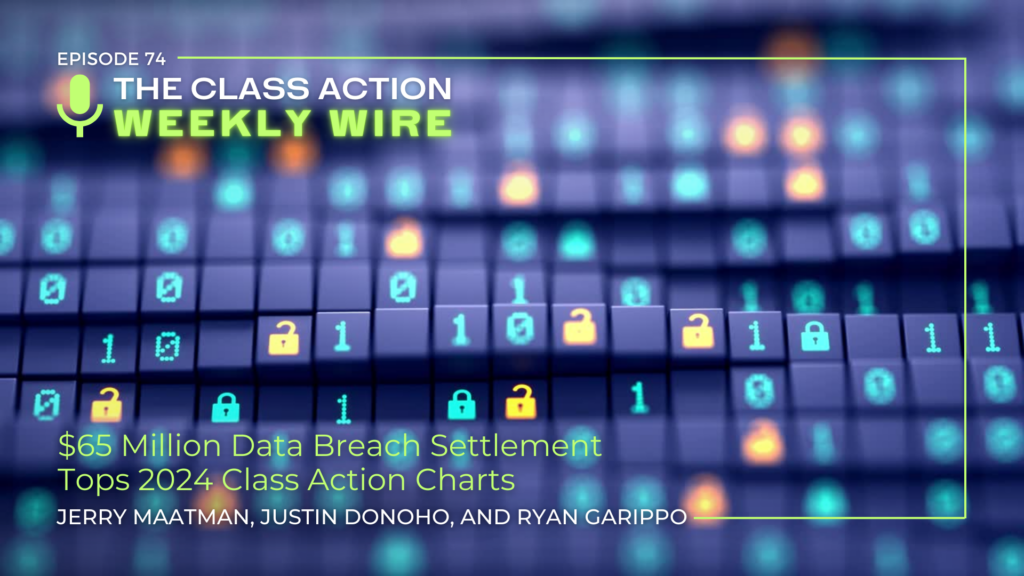By Gerald L. Maatman, Jr., Bernadette Coyne, and Zachary J. McCormack
Duane Morris Takeaways: On September 6, 2024, in Hamm v. Acadia Healthcare Co., Inc., No. 20-CV-1515, 2024 U.S. Dist. LEXIS 160319 (E.D. La. Sept. 6, 2024), Judge Susie Morgan of the U.S. District Court for the Eastern District of Louisiana denied Acadia LaPlace Holdings, LLC and Oschner-Acadia, LLC’s (“Acadia”) motion to decertify Plaintiffs’ Fair Labor Standards Act (“FLSA”) collective action in a suit accusing the hospital operator of failing to pay nurses for interrupted meal breaks. After the Court previously certified the collective action by applying the rigorous standard from Swales v. KLLM Transport Services, LLC, 985 F.3d 430, 441 (5th Cir. 2021), Acadia moved to decertify the collective by claiming the workers are too dissimilar for collective-wide treatment. However, the Court ruled that Acadia’s request to decertify was improper at this late stage in the litigation considering that the Court previously certified the collective action after providing the parties with the opportunity to conduct preliminary discovery and fully brief the issue. This ruling indicates that, although the Fifth Circuit has not ruled on whether a defendant can bring a motion to decertify after certification has been granted, this issue is becoming ripe for appellate review.
Case Background
Acadia is a leading provider of behavioral healthcare services that operates a network of approximately 250 facilities in thirty-eight states and Puerto Rico. Acadia previously employed Plaintiffs Amy Hamm and Joye Wilson as nurses at hospitals it operated in Texas and Louisiana. Hamm, 2024 U.S. Dist. LEXIS 160319, at *3. On May 22, 2020, Plaintiffs filed a complaint alleging Acadia violated the FLSA and Louisiana state law by failing to pay overtime compensation for on-duty meal periods and off-the-clock work. Id. Specifically, the two former workers claimed the hospital operator automatically deducted 30 minutes from the nurses’ paychecks for meal breaks despite constant interruptions and the requirement to remain on call to respond to potential emergencies during the breaks. Id.
On March 7, 2022, Plaintiffs moved for certification of their FLSA claims as a collective action, but prior to hearing Plaintiffs’ motion, the Court found that “limited discovery [was] needed” to evaluate “whether the employees in [the] proposed collective action [were] similarly situated” within the meaning of Section 216(b) of the FLSA. Id. Ultimately, after conducting the limited discovery, the Court partially granted Plaintiffs’ motion to certify, and on July 13, 2022, defined the collective action to include all current and former hourly, non-exempt employees directly involved with patient care — such as nurses, nursing staff, aides and technicians — who worked for Acadia between May 2017 through the date of the dispute’s resolution. Acadia later filed its motion to decertify Plaintiffs’ collective action, arguing that the named and opt-in plaintiffs were not sufficiently similar to be combined into a collective action because of differences between the jobs, meal break experiences, and the claims alleged by the Plaintiffs and the potential opt-in members. Id. at *4.
The Court’s Decision
Until January 2021, district courts within the Fifth Circuit generally applied the test derived from Lusardi v. Xerox Corp., 118 F.R.D. 351 (D.N.J. 1987),during the certification process for FLSA collective actions. The Lusardi test divided the notice and class certification process into two steps. In the first step, referred to as “conditional certification,” the court determined whether the proposed opt-in plaintiffs and the named plaintiffs were similarly situated. Hamm, 2024 U.S. Dist. LEXIS 160319, at *5. The plaintiff’s burden at this step was minimal, and as such, most collective actions are typically certified. Id. The second step, which occurrs at the conclusion of discovery, and was often prompted by a motion to decertify by the defendant, requires a more rigorous determination of whether the named plaintiffs and the opt-in plaintiffs were similarly situated. Id. If not, the named plaintiffs could only bring the lawsuit on their individual behalf, not on behalf of the opt-in plaintiffs. Id. at *6.
The Fifth Circuit rejected the Lusardi approach in Swales, and now district courts within the Fifth Circuit are instructed to “rigorously scrutinize” whether the named plaintiffs and potential opt-in plaintiffs are sufficiently similar to each other at the outset of litigation, before potential opt-in plaintiffs can be notified of the FLSA action. Id. Courts in the Fifth Circuit now identify what facts and legal considerations are material to making the “similarly situated” determination and authorize preliminary discovery accordingly. Id. The Swales decision further directs courts to make the certification decision “as early as possible.” Id.
In Acadia’s motion to decertify, it asked the Court to undertake a post-discovery decertification inquiry reminiscent of the second stage of the Lusardi test. Id. at *9. Specifically, Acadia argued that evidence obtained during the preliminary discovery phase revealed differences between the jobs, meal break experiences, and claims of Plaintiffs and opt-in members, and established that the members of the collective action were not “similarly situated” under Section 216(b). Id. at *10. In response, Plaintiffs argued that Acadia’s motion was moot because the Court already declared Plaintiffs were similarly situated under the rigorous Swales approach, and certified the FLSA collective action. Id. at *11. In its reply, Acadia advanced a proposition that “[a]t the decertification stage, even post-Swales, it is still Plaintiffs’ burden to prove and maintain through the litigation that the collective members are similarly situated.” Id. Acadia argued that using the Swales framework in lieu of the Lusardi two-step process does not mean defendants forfeit their ability to later seek decertification. Id. at *13.
Ultimately, Judge Morgan ruled that Acadia’s motion to decertify came too late and that “to allow such a motion would be a waste of judicial resources.” Id. The Court reasoned that once certified under the Swales framework, after an opportunity to conduct preliminary discovery and fully brief the issues, there is no justification for a motion to decertify. Id. Although the Fifth Circuit has not yet ruled on whether a defendant may bring a motion to decertify after the initial certification of an FLSA collective action under the Swales framework, Judge Morgan opined that the Swales decision was not intended to allow this. Id. at *14.
Implications For Employers
The Hamm ruling provides guidance to employers with operations in the Fifth Circuit as to how a court will treat a motion to decertify filed after the court has granted certification utilizing the Swales standard. Moving forward, employers in the Fifth Circuit should aim to break up a proposed collective action during the fact-intensive certification process conducted towards the beginning of the litigation. Courts are unlikely to require plaintiffs to maintain, throughout the litigation, that collective members are similarly situated. Corporate counsel should take note that “conditional certification” remains non-existent in the Fifth Circuit, and once a court considers all available evidence to grant Section 216(b) certification, it is unlikely to revisit the issue.


